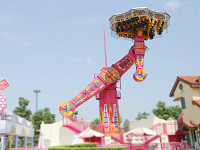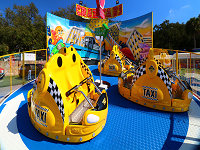How About The Development Of Amusement Equipment Ride All Over The World?
The emergence and development of amusement equipment
The emergence and development of the amusement industry is the inevitable result of social and economic development, and it is also an important symbol of modern social civilization. As an emerging industry, the amusement industry has developed rapidly in modern society, its status in the tourism industry and the national economy is increasing, and its proportion in the national economy is also increasing.
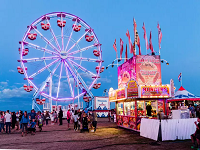


Overview of International Amusement equipment
The emergence and development of international amusement equipment
The prototype of the amusement ride appeared in Europe around 1550 AD. Outdoor entertainment at that time included fountains, gardens, bowling, games, music, dancing, and original recreational rides.
In 1650 AD, the “sleigh” appeared in St. Petersburg, the capital of Russia, which is actually the prototype of the modern scooter. With the increasing demand for games and entertainment, it was not until the 18th century that real amusement parks were born in France, Britain, the United States and other places.
In particular, the emergence of electric amusement equipment has made the amusement industry develop rapidly. The development of the international modern amusement industry has a history of more than 100 years. During this period, due to the impact of the economic crisis in the 1930s and the Second World War, the real rapid development stage was after the 1950s.
In 1955, the economy of the United States was restored and developed, and the world’s first “Disney” park was first built in Los Angeles. Since then, “Disney” parks have sprung up around the world one after another. In addition, the development of foreign water parks is also relatively rapid, and water parks in the modern sense originated in the West.
Although the water park industry appeared in North America from 1940 to 1950, but the first water park officially recognized by the World Water Park Association (WWA) was the Wet’N Wild water park created by George Milley in Orlando in the 1980s.
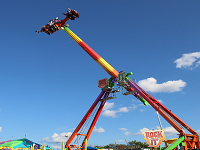


The successful operation and development of these large-scale amusement parks has set off a boom in the construction of theme parks all over the world. So far, more than 100 large-scale amusement parks have been built around the world.
The theme park is a new concept developed by the amusement park in the past 60 years, and the Disneyland built in 1955 marked the birth of the theme park. The development of amusement parks has a history of 500 years, and the overall development can be divided into 4 stages:
1583-1850, the origin stage: people’s needs for public entertainment, social interaction and public education.
From 1850 to 1920, the golden age: as the development of industrial technology brought about the convenience of transportation and the continuous innovation of the riding system, the economic development brought about the continuous increase of leisure time and disposable income.
From 1930 to 1950, the recession period: the population moved from the city to the countryside, and the TV appeared and became a new entertainment demand.
Since 1950, cultural needs and entertainment needs have been realized at the same time, which is the result of cultural innovation, technological innovation and demand upgrade.
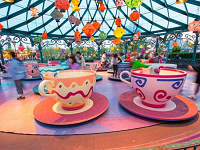
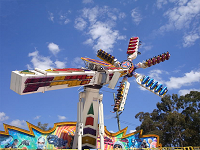

Reviewing the development history of amusement parks to theme parks, we can see that the development of amusement parks mainly comes from the public’s demand for entertainment, and the public’s entertainment demand comes from three aspects:
Good urban environment and public transportation construction: attracting a large number of migrants.
More disposable income of residents: bring a strong willingness to consume.
Higher level of cultural education and scientific and technological development: brought about continuous innovation of equipment and technology.
Current status of theme parks in developed countries
There are differences in the mode of operation, development scale and source market of theme parks in developed countries. The theme parks in the United States rank the top in terms of the number of parks, annual reception, per capita expenditure and average annual income per park, followed by Japan and the least in Europe, as follows:
UK: Great potential for development. Theme parks in the UK started in seaside resorts and then moved inland. With the increasing demand of British residents for theme parks, the development of British theme parks will maintain a low-speed development trend as long as the products are tasteful. Most theme parks in the UK are privately owned, and there has been a clear trend in recent years for major entertainment companies to participate in theme park development.
Japan: Emphasis on family and group-oriented traditional cultural characteristics. This cultural characteristic has influenced the leisure behavior of Japanese, which includes focus on family, group orientation, and focus on introspection and self-cultivation. Theme park design in Japan focuses on a unique family experience that suits Asian tastes.
America: Pioneer of the world’s theme parks. According to statistics, US residents spent $14 billion on theme parks in 1993, more than movie and video revenue. State and private sector investment in theme parks reached $13 billion.
International theme park development experience
Importance of location selection: The development of international theme parks places special emphasis on the key role of geographic location on the success or failure of operations. Spain’s experience has proved that theme parks have good development prospects in tourist destinations.
The United Kingdom believes that the ideal location of a theme park must be adjacent to two commercial advertising-intensive areas and not adjacent to other theme parks. At the same time, there are more than 12 million residents within a 2-hour driving area or less than 1-hour driving from a large tourist resort. .
Fully display the theme: The difference between a theme park and a general leisure park lies in its theme charm. The perfect theme can give visitors an unforgettable experience. Many theme parks in the West are multi-plate and compound themes. These parks generally use continuous visual cues to make the overall theme reflected in each section and section of the park.
Emphasize the participation of tourists: A theme park without customer participation is lifeless, and the entertainment activities of the theme park should be continuously and actively participated by tourists. For example, theme parks in Japan have introduced entertainment facilities and activities that both children and adults can participate in, such as pirate ships, water slides, roller coasters, etc. The entertainment facilities for parents and children are growing rapidly in Japan.
Combination of entertainment and education: A successful theme park enables tourists to gain knowledge while having fun. Learning and acquiring knowledge is an important aspect of attracting tourists, and the expansion of the educational function of theme parks will become an important aspect of future theme park construction.
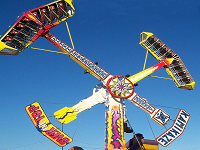
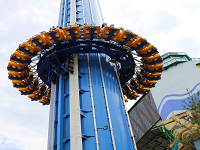
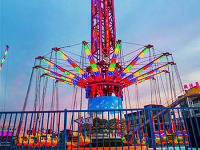
Combining theme parks with retail: The development of retail business in theme parks is a major trend in the world today. The development of retail business in theme parks can prolong customer retention time, increase revenue, and also help attract investment.
Diversification of price strategies: In recent years, the operating prices of world theme parks include single ticket price, high quality and low price, low-ticket multi-service and low-cost strategies. Single ticket price is the traditional price strategy of theme parks, especially those theme parks that lack facilities and services and have relatively simple activities; high-quality and high-price is the price strategy generally adopted by high-tech, high-investment comprehensive theme parks in recent years; low tickets and multiple services It advocates attracting tourists with low ticket prices and increasing profits with numerous related services, which will become a common strategy for the operation of comprehensive theme parks in the future. The cheap strategy is suitable for theme parks near resort areas, where competition for cheap entertainment is fierce.
Perfect service system: The service equipment of the international theme park are very perfect. Various service desks are located on the main streets of the park, including entertainment inquiries, accommodation inquiries, and dinner reservation inquiries. The park provides convenience to tourists from all aspects and meets the needs of tourists, among which the service of personnel is the most important.
Operational scale: The economies of scale of international theme parks are mainly achieved in two ways: the first way is that investment companies operating theme parks invest in and build parks scattered in different regions, and are involved in the operation of various industries, such as Movies, restaurants, broadcasting, animation, etc. The second way is to reduce the unit cost and strengthen the competitiveness by expanding the scale of a theme park in the region, increasing its attractiveness and expanding passenger flow.
The formation of economies of scale in international theme parks is a gradual process. On the one hand, scale operations are driven by the need for competition, and on the other hand, they are closely related to the development of international theme park vacation models.

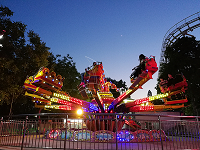
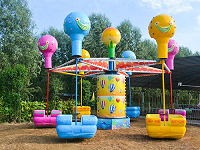
International amusement equipment manufacturing enterprises
The development of the amusement industry has promoted the development of amusement equipment production enterprises. Most of the international amusement equipment manufacturers are Italy, the United Kingdom, France, the Netherlands, Switzerland, the United States, and Japan. Avery Bridge Company in the United States is a 100-year-old amusement equipment manufacturer, and its products are sold in more than 20 countries and regions.
This enterprise has strong development and innovation ability, advanced production technology, extensive application of computer technology and microelectronic technology, and its products are thrilling and creative. Other well-known amusement ride companies include Premier, Aaron, and Johns in the United States; Zamperla, Mosuo, SDC, Benfali in Italy; Zille, Mike, and Hus in Germany; Intamin in Switzerland ; Holland’s Weikma; Japan’s Toyu, Quanyang, Sano An, Lingye, Mingchang, Okamoto, etc.
These world-renowned enterprises use modern advanced technology, actively develop and innovate, and constantly innovate, and push the development of amusement facilities to a new stage.




